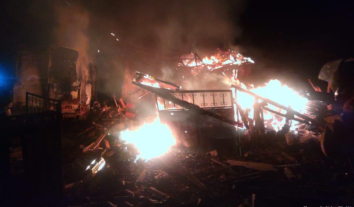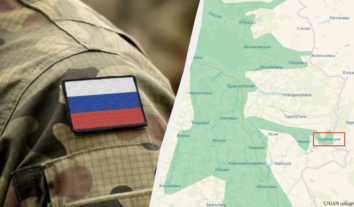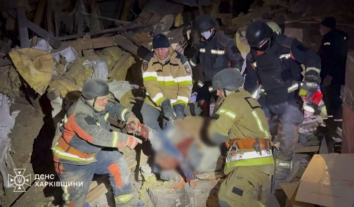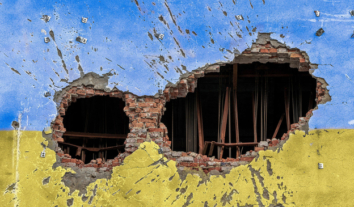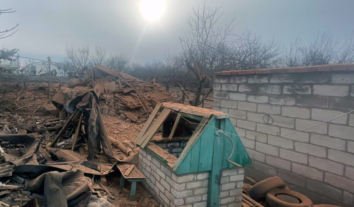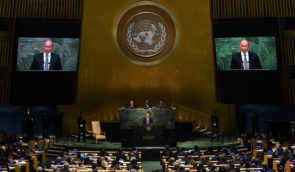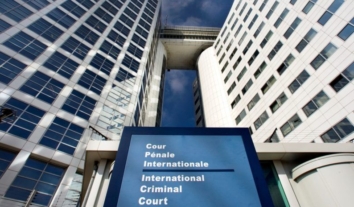Russian drone strikes clinic in Kherson, injuring eight medical workers
Russian forces launched a drone attack on an outpatient clinic in Kherson Oblast’s Bilozerka Hromada on February 19, 2025, injuring eight healthcare workers, according to the Kherson Oblast Prosecutor’s Office.
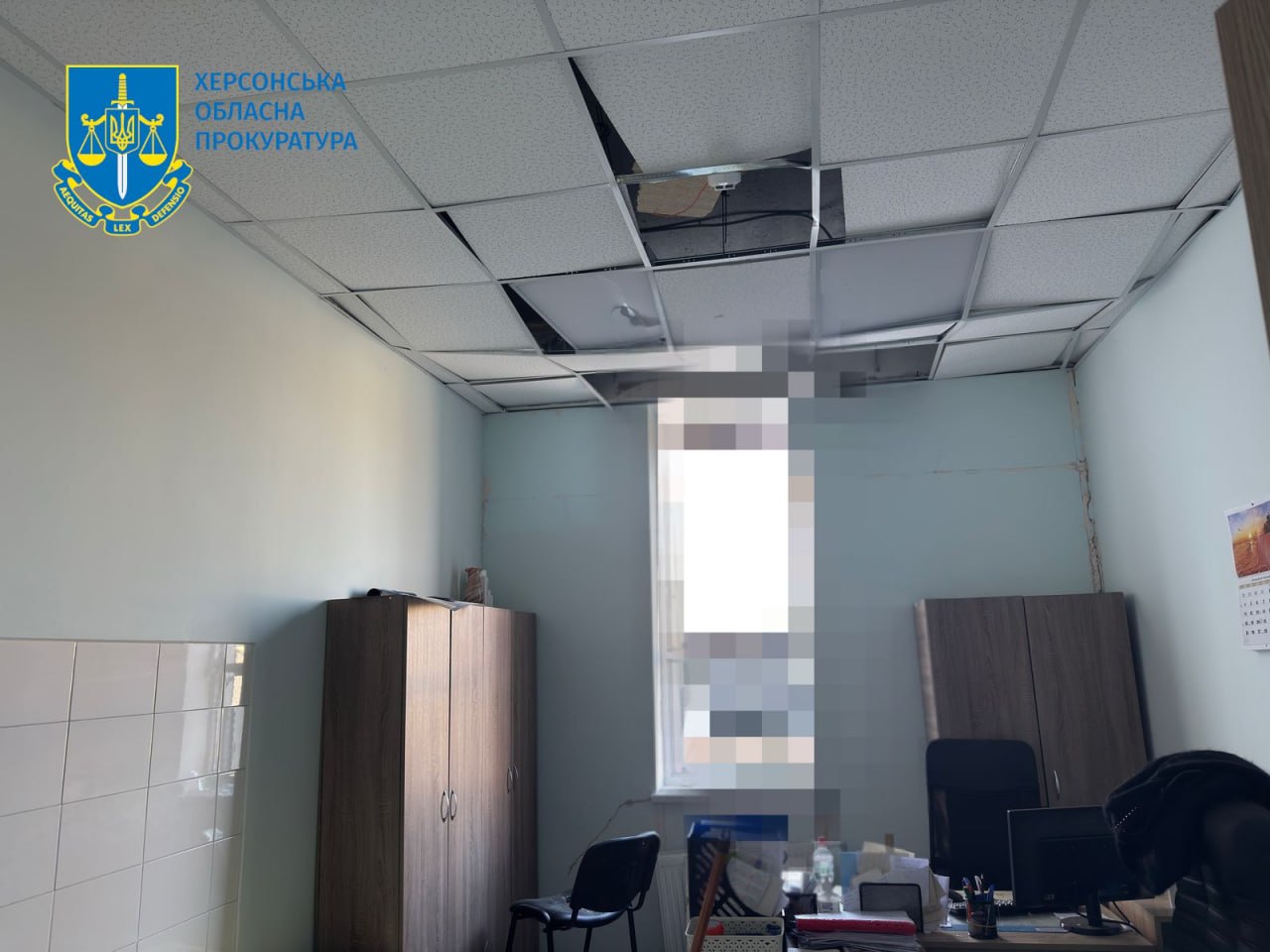
It is reported that eight healthcare workers were injured as a result of the explosive being dropped from a drone. One victim was taken to the hospital; the others received outpatient medical care.
Currently, prosecutors and investigators continue to document war crimes committed by Russian forces.
The Air Force of Ukraine claims to have shot down 106 out of 167 Russian drones launched in an overnight attack. Another 56 drones were “lost in location”, causing no damage. The Odesa, Kyiv, Sumy, Cherkasy, and Zaporizhzhia regions were hit, the Air Force of Ukraine said, providing no further details.
Less than a week earlier, according to the Kherson Oblast Military Administration, Russian military forces attacked a car in Kherson’s Dnipro district with a drone at around 16:30 on the evening of February 13, killing two people.
Due to an explosive being dropped on the vehicle, two people sustained fatal injuries – a 58-year-old woman and a 62-year-old ambulance driver who was on a personal errand.
Later, the Kherson Oblast Military Administration reported that the Russian army struck the village of Rozlyv in the Bilozerka hromadaі . A 51-year-old woman suffered blast injuries and a concussion after the strike on a residential building.
On February 1, a Russian UAV attack killed a resident of Antonivka in the Kherson Oblast as well as a 22-year-old man in the city of Kherson at approximately 18:30 the day before on January 31, according to Oleksandr Prokudin, head of the Kherson Oblast Military Administration, via Telegram.
Earlier, Roman Mrochko, head of Kherson City Military Administration, reported that on the morning of January 29, Russians killed a 52-year-old man in the village of Antonivka with a drone.
At around 11:30 on January 28, the Russian army personnel also launched a drone attack on the village of Antonivka in Kherson Oblast, killing a 49-year-old man and injuring a 57-year-old woman, according to Mrochko.
On January 27, Prokudin reported that Russians attacked a 44-year-old man in a tractor with a drone in the city of Kherson.
Following an explosion in the Kherson Oblast on November 6, 2024, a 55-year-old man died, and his 53-year-old wife was taken to hospital in critical condition, according to Prokudin. He reported that the incident occurred in the village of Ishchenko, Velyka Oleksandrivka Hromada, the Kherson Oblast.
ZMINA consistently reports on the ongoing international crimes in the Kherson Oblast.
Following US-Russia talks in Riyadh, former President Donald Trump told journalists at Mar-a-Lago that Ukraine “could have made a deal” to end the war. This statement came after President Volodymyr Zelenskyy expressed surprise at Ukraine’s exclusion from the negotiations.
Trump incorrectly claimed Zelenskyy’s approval rating was 4%. However, recent polling by the Kyiv International Institute of Sociology (KIIS) shows Zelenskyy’s trust rating at 57%, with 37% expressing distrust – a net positive rating of 20%.
KIIS data shows Zelenskyy’s trust rating has improved from 52% in December 2024 to 57% in February 2025, with the net trust rating rising from +13% to +20%.
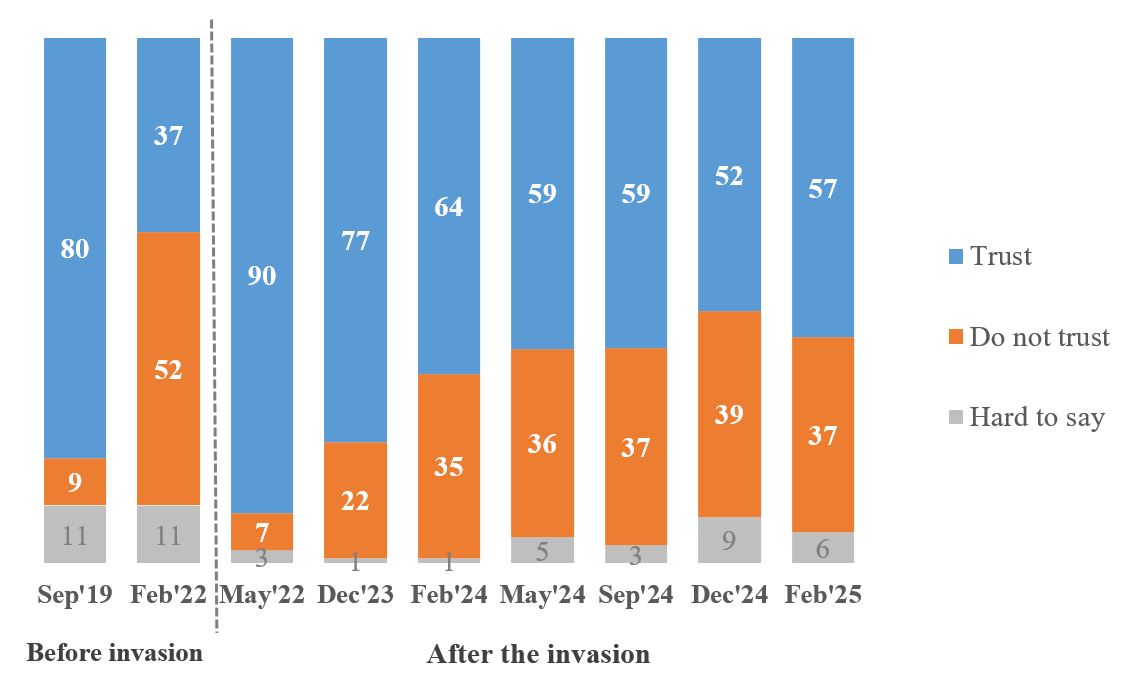
“If some international partners and allies are worried about the legitimacy of the President in the context of possible peace negotiations and consider it appropriate to insist on elections, then from the point of view of Ukrainian citizens themselves, there are no problems with this, the current President and the authorities are quite legitimate to conduct complex negotiations, and elections should be held after the war ends and at least Ukraine receives reliable security guarantees,” executive director of KIIS Anton Hrushetskyy commented the results of the poll.
KIIS conducted the poll from February 4-9, surveying 1,000 adults in Ukraine-controlled territory via random mobile phone sampling.
The sample did not include residents of the territories temporarily not controlled by the Ukrainian government (although some respondents were internally displaced persons who had moved from the occupied territories), and the survey did not include citizens who had moved abroad after February 24, 2022.
Formally, under normal circumstances, the statistical error of such a sample (with a probability of 0.95 and taking into account the design effect of 1.3) did not exceed 4.1% for indicators close to 50%, 3.5% for indicators close to 25%, 2.5% for indicators close to 10%, and 1.8% for indicators close to 5%.
Sociologists point out that in times of war, in addition to the above formal error, a certain systematic deviation is added, but in general, they believe that the results obtained still retain high representativeness and allow for a fairly reliable analysis of public sentiment.
Zelenskyy said that Ukraine is seeing “a lot of disinformation” coming from Russia.
“With all due respect to President Donald Trump as a leader….he is living in this disinformation space,” he added.
Zelenskyy is sure that the policies of the United States and President Donald Trump’s administration are pulling Russian ruler Vladimir Putin out of isolation and Russia out of its position as an aggressor.
The Ukrainian President is startled that, three years after Russia’s full-scale invasion of Ukraine, US representatives refer to the war as a “conflict” and remain loyal to Russia. He considered such activities to be a mitigation of Russia’s occupation actions, but he also stated that this is not the first time he has had to deal with such a policy on the part of his partners.
Previously, in an interview with German public broadcaster ARD, Zelenskyy emphasised that Ukraine will not legally renounce its territories or sign any agreements “just for the sake of loud applause”.
Zelenskyy revealed the war has cost approximately $320 billion:
- $120 billion from Ukrainian taxpayers
- $200 billion from the US and EU combined
- US contribution includes $67 billion in weapons and budget support
Zelenskyy dismissed Trump’s claim about $500 billion worth of rare earth minerals, stating, “That’s not a serious conversation.”

